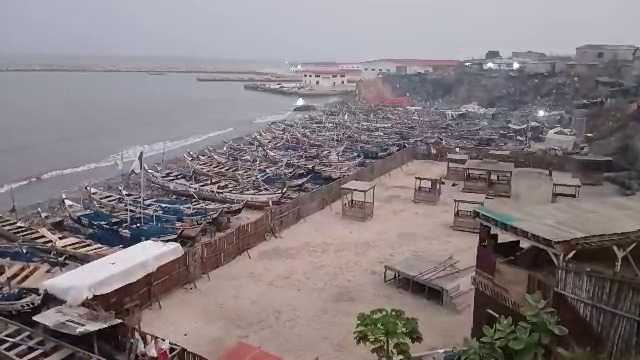Advertisement
The
Ghana
Hydrological
Authority
needs
$390
million
to
protect
290
km
of
Ghana’s
coastal
stretch
that
is
housing
critical
national
assets.
The
Authority
is
calling
for
public-private
partnership
funding
to
invest
in
coastal
and
climate
adaptation
management
to
safeguard
life
and
property.
Ghana’s
coastline
is
approximately
550
km
long,
the
entire
stretch
varies
in
vulnerability
with
180
km
fairly
stable
with
low
vulnerability,
370
km
at
risk
and
requiring
coastal
protection,
80
km
stretch
is
protected
from
completed
and
ongoing
projects
and
290
km
stretch
holds
important
and
strategic
national
assets
which
need
immediate
protection.

Due
to
the
low-lying
nature
of
the
country’s
coastline,
it
has
low
elevation
making
it
susceptible
to
flooding
and
erosion.

Persistent
wave
activity
accelerates
coastal
erosion,
aiding
degradation
as
increasing
sea
levels
due
to
climate
change
exacerbate
coastal
inundation
and
erosion.

Human
activities,
such
as
urban
development
and
construction,
have
contributed
to
coastal
vulnerability.

Moreover,
extraction
of
sand
from
beaches
and
riverbeds
depletes
natural
coastal
defenses.
Clearing
coastal
vegetation
reduces
natural
protection
against
erosion
and
storm
surges,
while
the
construction
of
dams
and
harbors
disrupts
natural
sediment
flow,
leading
to
increased
coastal
erosion.

Authorities
at
Ghana
Hydrological
Authority
said
they
are
undertaking
various
projects
to
protect
the
coastal
line.
Some
of
the
ongoing
projects
include
Dansoman
Sea
Defense,
Dixcove
Sea
Defense,
Cape
Coast
Coastal
Protection
Project,
Komenda
Coastal
Protection,
Anomabu
Coastal
Works,
new
Takoradi
Coastal
Protection
Works
Phase
III,
Aboadze
Coastal
Protection
phase
II
and
Ningo
Prampram
Coastal
Protection
Project.

Out
of
the
290
km
of
coastal
stretch
requiring
protection,
specific
areas
holding
critical
national
assets
necessitate
immediate
safeguarding
measures
to
prevent
the
country
from
losing
properties
that
contribute
to
its
development.
The
critical
coastline
includes
the
Anlo
Beach
shoreline
which
has
national
power
installations
such
as
Takoradi
Thermal
Power
Station
(530MW)
and
Twin
Energy
Station
(200MW)
as
well
as
coastal
communities,
and
the
livelihoods
of
residents.
The
shorelines
have
some
key
institutions
and
road
infrastructure,
Cape
Coast,
Accra-Cape
Coast-Takoradi
Highway,
University
of
Cape
Coast
Campus,
St.
Augustine
Senior
High
School,
Cape
Coast
Nursing
and
Midwifery
Training
College,
Ezinlibo
Coastal
stretch
for
coastal
towns,
Operation
Base
for
the
Military,
and
infrastructures
along
the
shoreline.
Additionally,
the
Ningo-Prampram
shoreline
requires
protection
to
forestall
tourism
activities,
infrastructures
(road,
land
and
properties,
beach
resorts
and
Blekusu
coastline
require
protection
for
the
entire
coastal
stretch,
and
the
Denu-Aflao
highway.
The
Chief
Executive
Officer
of
the
Ghana
Hydrological
Authority
Dr.
John
Kissi
in
a
press
briefing
called
for
public-private
partnership
to
protect
the
coastlines
as
well
as
control
human
activity.
He
said
most
of
the
country’s
coastline
is
surrounded
by
properties
of
private
individuals,
hence
the
need
for
these
individuals
to
collaborate
with
the
government
to
help
protect
life
and
properties.
He
added
that
considering
the
huge
challenges
along
the
country’s
coastline,
the
authority
will
derive
strategic
initiative
for
enhancing
coastal
resilience
and
management.
By
Kingsley
Adusei
Amakye
Onua
TV/3news


